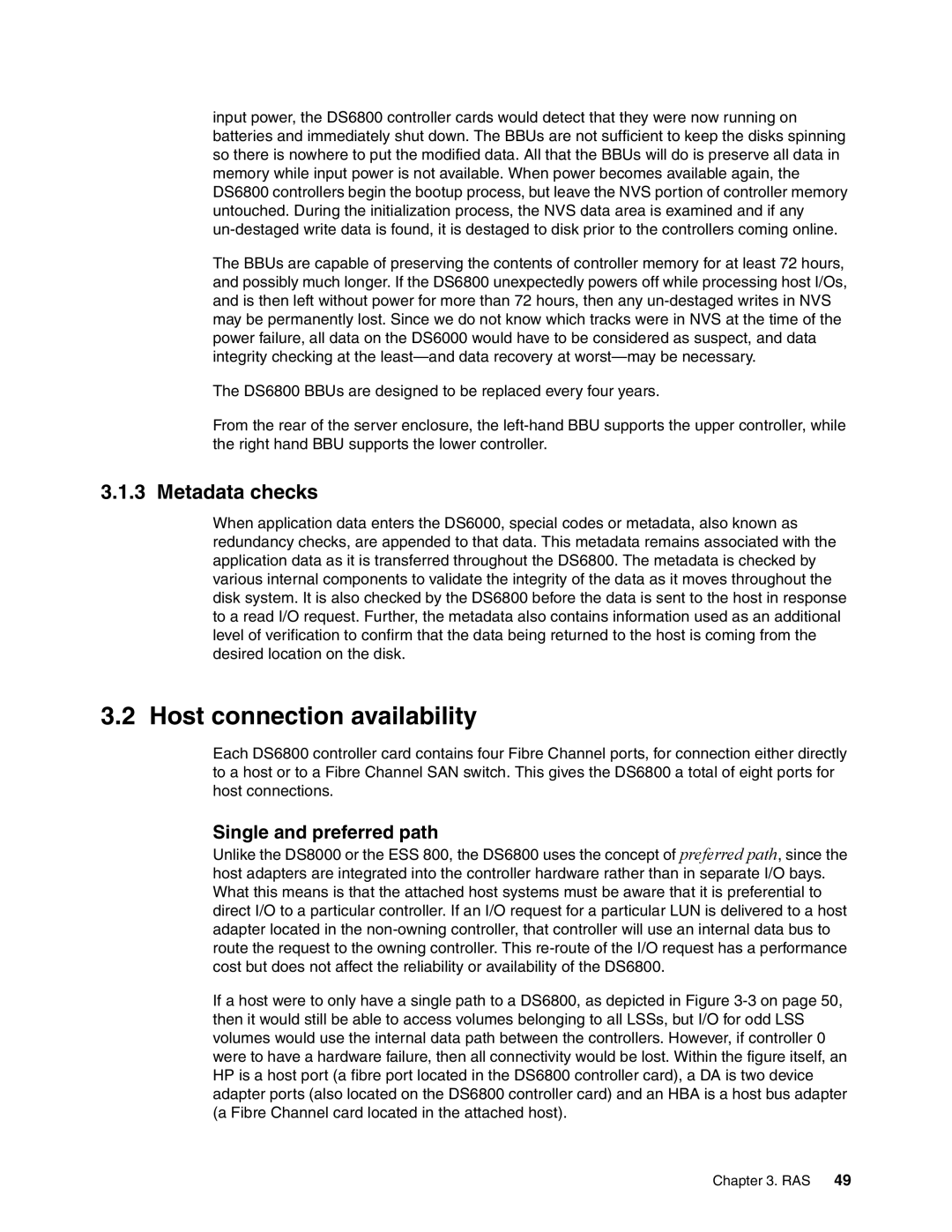input power, the DS6800 controller cards would detect that they were now running on batteries and immediately shut down. The BBUs are not sufficient to keep the disks spinning so there is nowhere to put the modified data. All that the BBUs will do is preserve all data in memory while input power is not available. When power becomes available again, the DS6800 controllers begin the bootup process, but leave the NVS portion of controller memory untouched. During the initialization process, the NVS data area is examined and if any
The BBUs are capable of preserving the contents of controller memory for at least 72 hours, and possibly much longer. If the DS6800 unexpectedly powers off while processing host I/Os, and is then left without power for more than 72 hours, then any
The DS6800 BBUs are designed to be replaced every four years.
From the rear of the server enclosure, the
3.1.3 Metadata checks
When application data enters the DS6000, special codes or metadata, also known as redundancy checks, are appended to that data. This metadata remains associated with the application data as it is transferred throughout the DS6800. The metadata is checked by various internal components to validate the integrity of the data as it moves throughout the disk system. It is also checked by the DS6800 before the data is sent to the host in response to a read I/O request. Further, the metadata also contains information used as an additional level of verification to confirm that the data being returned to the host is coming from the desired location on the disk.
3.2 Host connection availability
Each DS6800 controller card contains four Fibre Channel ports, for connection either directly to a host or to a Fibre Channel SAN switch. This gives the DS6800 a total of eight ports for host connections.
Single and preferred path
Unlike the DS8000 or the ESS 800, the DS6800 uses the concept of preferred path, since the host adapters are integrated into the controller hardware rather than in separate I/O bays. What this means is that the attached host systems must be aware that it is preferential to direct I/O to a particular controller. If an I/O request for a particular LUN is delivered to a host adapter located in the
If a host were to only have a single path to a DS6800, as depicted in Figure
Chapter 3. RAS 49
